Located in the Cell Culture Unit, Faculty of Medicine, University of Alcalá, has a room perfectly suited to host a Confocal Microscope service that provides 4 lasers and cell incubation cabin. This Unit is coordinated by Dr. Gemma Pascual, PI of the Translational Research and Tissue Engineering Group at the University of Alcalá. FOR THOSE SERVICES IDENTIFIED AS OUTSTANDING, AT LEAST 20% OF THEIR CAPACITY IS OPEN UNDER COMPETITIVE ACCESS. SEE ANNEX 1 OF ACCESS PROTOCOL FOR DETAILS ON % OF OPENNESS FOR EACH SERVICE
03 Jun NANBIOSIS Unit 17 (Confocal Microscopy) is a CIBER-BBN unit located in the Cell Culture Unit, CAI Medicine and Biology, Faculty of Medicine at the University of Alcala. This unit of the ICTS NANBIOSIS supports researchers interested on their different studies visualizing diverse samples as tissues, cells, bacterial biofilms, etc. This unit owns the tools, the know-how and the expertise to accomplish researchers’ goals either by transmission or reflection fluorescent. We are happy of sharing this video in which researchers of Unit 17 show all the steps required for the visualization of the PV-1 molecule, also known as PLVAP, on t[...] 18 Apr ICTS-NANBIOSIS. UNIT 17 CONFOCAL MICROSCOPY SERVICE. (CIBER-BNN. UNIVERSITY OF ALCALÁ) The UAH research groupTranslational research of chronic diseases associated with aging and kidney disease has recently published an article in which unit NANBIOSIS unit 17 and Leica SP5 confocal microscope has had a great contribution Located in the Support Center for Research in Medicine and Biology, Faculty of Medicine and Healthe Sciences, University of Alcalá (UAH). The Unit is equipped with a Leica TCS-SP5 confocal microscope. The confocal module is equipped with three spectral detection channels, AOBS (Acousto-optical beam splitter) and a resonant scanner system that allows analysis at hig[...] 17 Feb Obesity is caused by the enlargement of the white adipose tissue (WAT) depots, characterized by the hypertrophic enlargement of malfunctioning adipocytes within WAT, which increases the storage of triglycerides (TG) in the lipid droplets (LD). Adipogenesis pathways as well as the expression and activity of some extracellular matrix receptors integrins are upregulated. Integrinβ1 (INTB1) is the main isoform involved in WAT remodeling during obesity and insulin resistance-related diseases. We recently described Integrin Linked Kinase (ILK), a scafold protein recruited by INTB1, as an important mediator of WAT remodeling and insulin resistance. As the few approved drugs to fight obesity hav[...] 08 Oct C2C12 myoblast cells differentiating into myotubes and adopting unusual shapes have been obtained and captured by resarchers of UAH and NANBIOSIS Unit 17 Confocal Microscopy Service (of CIBER-BBN and UAH) and and chosen photo of the month by the Spanish Society of Biochemistry and Molecular Biology (SEBBM) The picture illustrates the month of October on the calendar that the SEBBM publishes and distributes annually among all partners, and is part of the gallery of images that illustrate the activities of the SEBBM. Likewise, the photography will participate in the “Best Scientific Image of the Year” contest. The winning image is[...] 25 Apr Elena Alcalde‑Estévez, Patricia Sosa, Ana Asenjo‑Bueno, Patricia Plaza, Gemma Olmos, Manuel Naves‑Díaz, Diego Rodríguez‑Puyol, Susana López‑Ongil & María P. Ruiz‑Torres, are the authors of an article recently published in the Journal Scientific Reports, of Nature Research, ·mentioning the collaboration in the investigation of the ICTS “NANBIOSIS” U17 Confocal Microscopy Service of CIBER-BNN and the University of Alcalá. Uremic toxins (UT) increase in the serum in parallel with a decrease in the glomerular filtration rate and the development of sarcopenia in patients with chronic kidney disease (CKD). This study analyses the role of UTs in sarcopenia associated with CKD in different[...] 07 Apr Sara Jiménez-Jiménez, Georgiana Amariei, Karina Boltes, María Ángeles García and María Luisa Marina have recently published an article in the Journal of Chromatography A, ·mentioning the collaboration in the investigation of the ICTS “NANBIOSIS” U17 Confocal Microscopy Service of CIBER-BNN and the University of Alcalá. The echocytotoxicity of racemic panthenol and dexpanthenol at different concentrations and exposure times in Spirodela polyrhiza has been studied using NANBIOSIS U17 Confocal Microscopy Service “Panthenol (racemic mixture) and its isomer dexpanthenol have been classified as toxic for the aquatic environment by the European Regulation (EC 1272/2008). These studies are based on the natural emission[...] 11 Feb Today February 11 is the International Day of Women and Girls in Science, a day to raise awareness of the gender gap in science and technology. According to the United Nations, while yet women and girls continue to be excluded from participating fully in science, science and gender equality are vital to achieve the internationally agreed development goals, including the 2030 Agenda for Sustainable Development. Thus, in recent years, the international community has made a great effort to inspire and promote the participation of women and girls in science. NANBIOSIS wants to acknowledge the efforts made by scientific women who struggle every day to contribut[...] 13 Jul A new article has been recently published about Cardiac hypertrophy research in the Scientific Reports Jorunal by NatureResarch, counting with the expertise of NANBIOSIS unit 17 Confocal Microscopy Service form CIBER-BBN and University of Alcalá de Henares. Cardiac hypertrophy is the abnormal enlargement, or thickening, of the heart muscle, resulting from increases in cardiomyocyte size and changes in other heart muscle components, such as extracellular matrix. This article relates more especifically with the link between long term exposure to xenoestrogen Bisphenol-A and adverse cardiovascular effects and the role of necroptosis in cardiac response to BPA had not yet been explored.[...]

U17. Confocal Microscopy Service
![]()
Description
Services
Equipments
Active projects
Publications
News U17
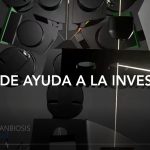
How to accomplish researchers’ goals with Confocal Microscopy: the tools, the know-how and the expertise you need
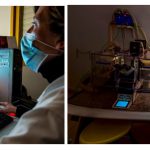
Experimental & molecular medicine: a new article with NANBIOSIS U17
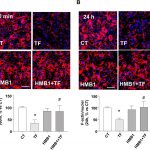
The integrin beta1 modulator Tirofiban prevents adipogenesis and obesity by the overexpression of integrin-linked kinase: a pre-clinical approach in vitro and in vivo
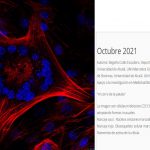
“Ring Around the Rosy”
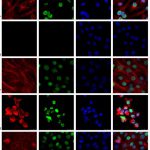
Uraemic toxins impair skeletal muscle regeneration by inhibiting myoblast proliferation, reducing myogenic differentiation, and promoting muscular fibrosis
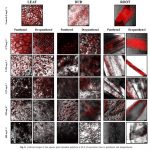
Toxicity evaluation on non-target organisms with the collaboration of NANBIOSIS U17 Confocal microscopy
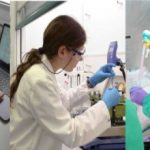
NANBIOSIS Scientific Women in the International Day of Women and Girls in Science
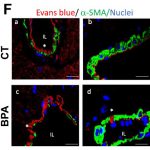
Cardiac hypertrophy research with NANBIOSIS unit 17 Confocal Microscopy Service participation